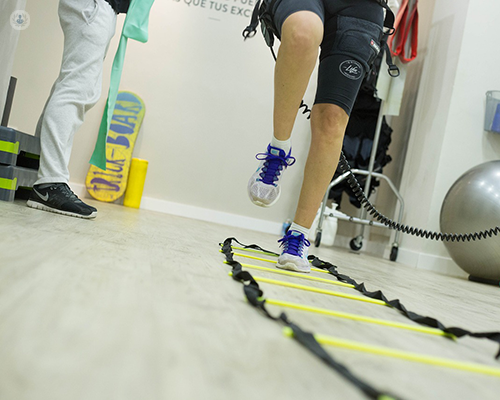Neurological rehabilitation following traumatic injury: A path to recovery
Escrito por:Neurological rehabilitation following a traumatic injury is crucial in supporting patients who have experienced brain or spinal cord injuries to regain independence and enhance their quality of life.
Here, Dr Vijay Kolli, leading consultant in physical and rehabilitation medicine at the renowned Cleveland Clinic London Rehabilitation Unit, provides an expert insight into the process of neurological rehabilitation following a traumatic injury, its goals, and the journey towards recovery.

When is neurological rehabilitation required following a traumatic injury?
Neurological rehabilitation becomes necessary when a patient sustains a traumatic injury that affects the nervous system. This can include injuries such as traumatic brain injury (TBI), spinal cord injury (SCI), stroke, or other conditions that result in neurological injury. The severity of these injuries can vary widely, impacting motor skills, cognition, speech, as well as functionality.
Following stabilisation and emergency medical care, neurological rehabilitation is typically initiated to address the long-term effects of the injury. It is often recommended when there is a significant impact on daily activities and quality of life, and when there is potential for improvement through therapeutic interventions.
What does neurological rehabilitation for a traumatic injury involve?
Neurological rehabilitation following a traumatic injury consists of a comprehensive, multidisciplinary approach tailored to address the challenges that arise from injuries to the brain or spinal cord. The specific characteristics may vary based on the type and severity of the injury, as well as the individual needs and goals of the patient. However, the key elements of neurological rehabilitation typically include:
- Physical therapy: Physical therapy focuses on improving mobility, strength, balance, and coordination through exercises, gait training, and the use of assistive devices.
- Occupational therapy: Occupational therapy focuses on enhancing adaptive skills and daily living skills, such as dressing.
- Speech and language therapy: Speech and language therapy focuses on improving communication, swallowing difficulties (dysphagia), and cognitive-linguistic challenges to improve functional abilities.
- Neuropsychology: Neuropsychology focuses on providing assessment and intervention to manage cognitive challenges, emotional adjustments, and behavioural changes.
How is neurological rehabilitation tailored to a patient’s specific injury and recovery needs?
Neurological rehabilitation is highly individualised, considering each patient’s unique injury circumstances and recovery goals. This personalised approach begins with a comprehensive assessment, which involves thorough evaluations to understand the specific challenges faced by the patient.
Collaboratively, a multidisciplinary team of rehabilitation consultants sets realistic and meaningful rehabilitation goals based on the patient’s aspirations and medical prognosis. Customised treatment plans are then developed, integrating various therapies and interventions to address specific challenges and promote functional gains.
Throughout the rehabilitation journey, progress is continuously monitored, allowing for adjustments in treatment strategies as needed to optimise recovery outcomes over time. This tailored approach ensures that interventions are maximally effective, supporting patients in achieving their recovery milestones successfully.
What is the typical timeline for recovery from a traumatic injury?
The timeline for recovery from a traumatic injury can vary significantly depending on factors such as the type and severity of the injury, the patient’s overall health, and the response to rehabilitation. While every case is unique, recovery generally follows a phased approach:
- Acute phase: The acute phase focuses on stabilisation and medical care immediately following the injury, which may last a few days.
- Subacute phase: The subacute phase focuses on intensive neurological rehabilitation aimed at maximising functional recovery, often spanning several months.
- Chronic phase: The chronic phase focuses on addressing long-term management, ongoing rehabilitation, and adaptation to any permanent disabilities, which can extend several months to even years.
Recovery milestones are typically achieved incrementally, with initial gains followed by continued progress and adaptation to functions.
What are the primary goals of neurological rehabilitation for a traumatic injury?
Neurological rehabilitation aims to maximise functional independence, improve quality of life, and facilitate the best possible recovery outcomes. It seeks to enhance overall wellbeing by addressing physical, cognitive, emotional, and social aspects of recovery.
Additionally, rehabilitation focuses on preventing complications such as contractures, pressure sores, and respiratory issues, whilst supporting patients in their return to work, school, and daily activities. Ultimately, the goal is to empower patients to lead fulfilling lives post-injury.
To schedule an appointment with Dr Vijay Kolli, head on over to his Top Doctors profile today.


